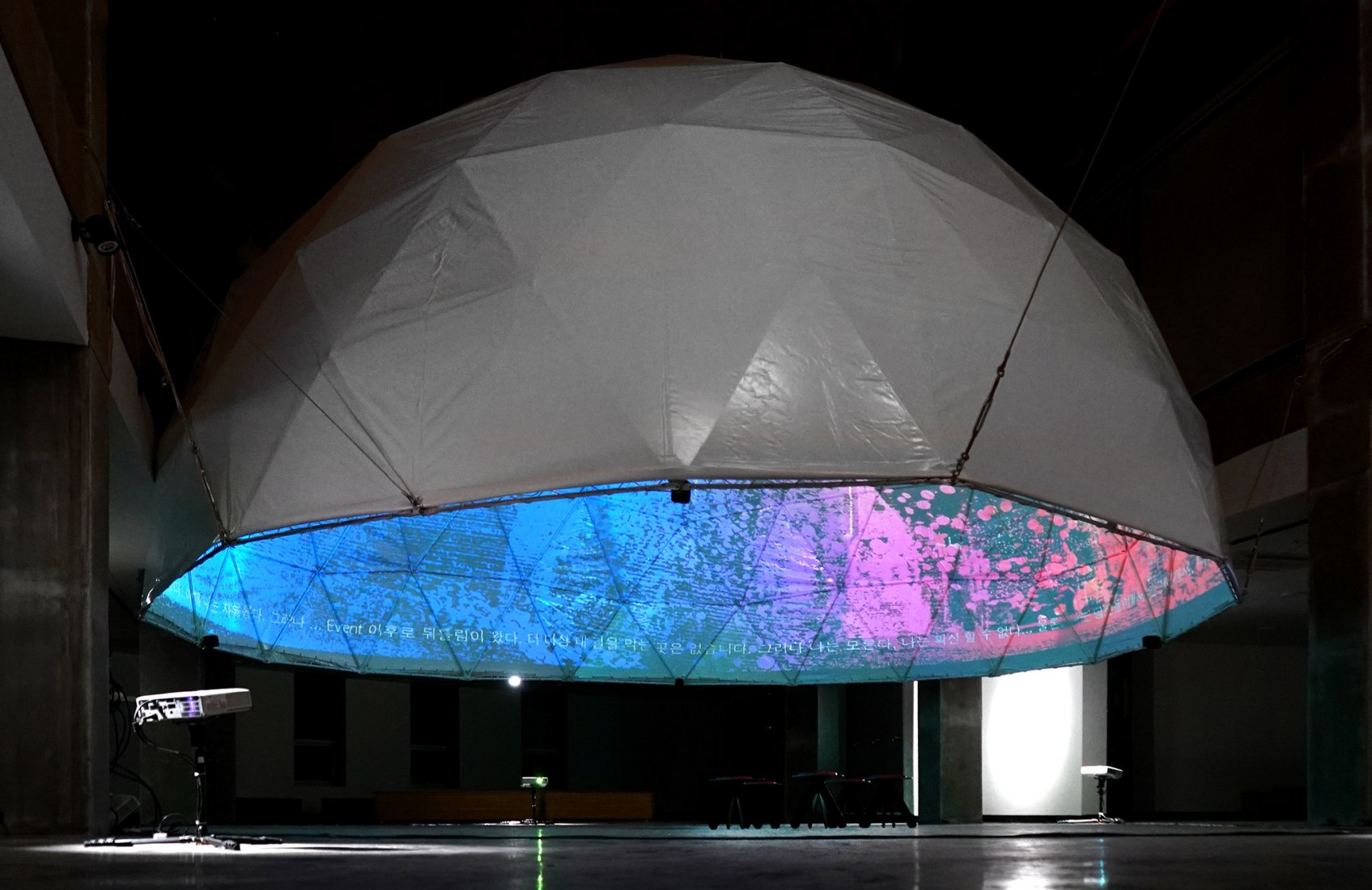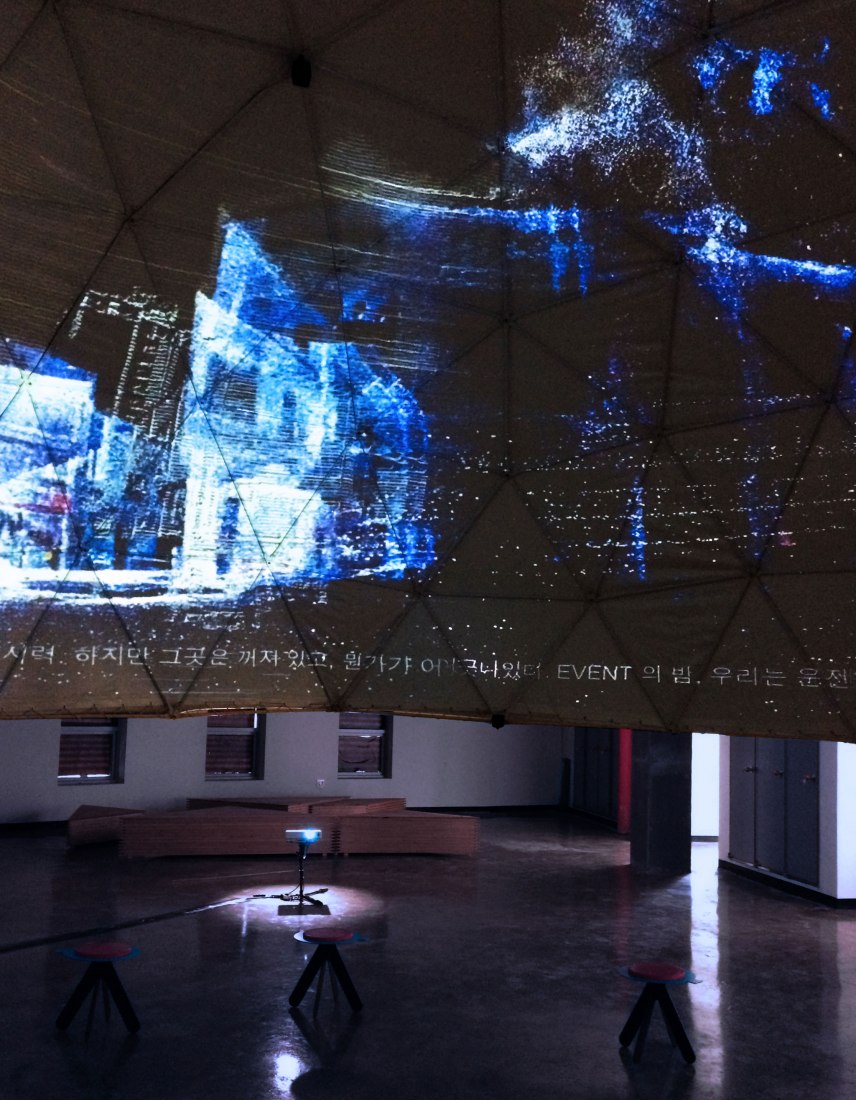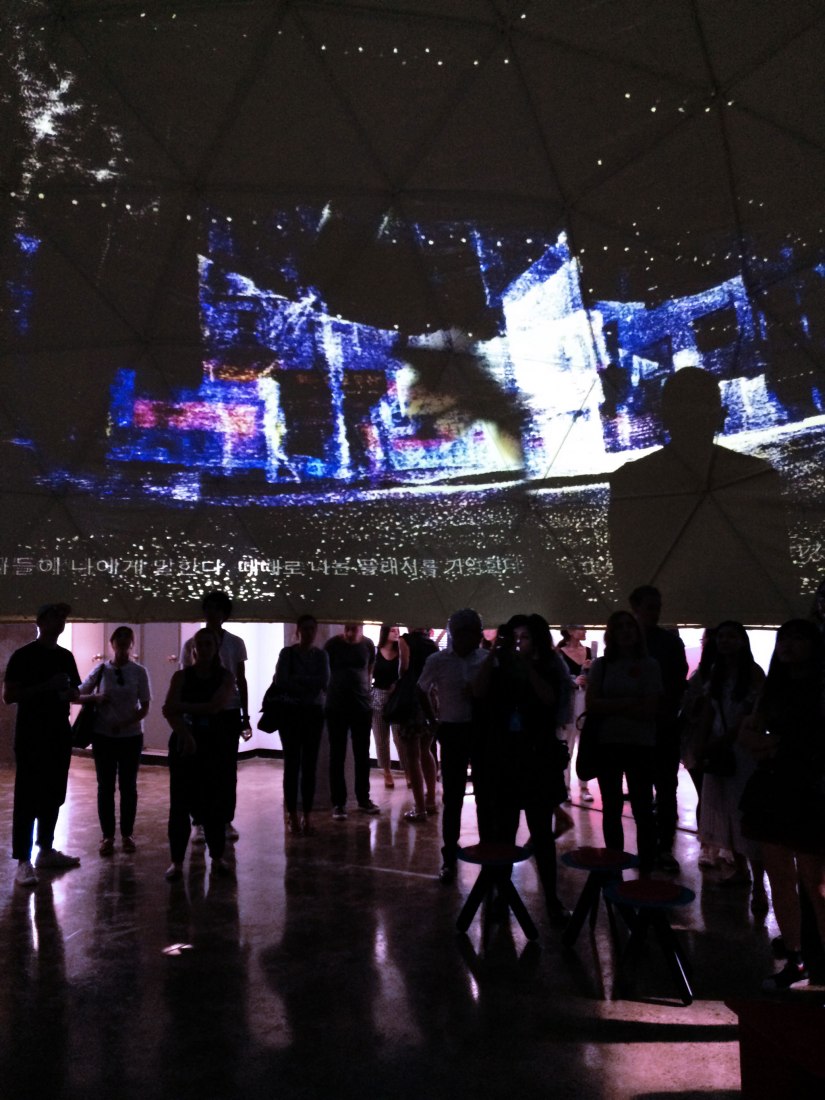Descripción del proyecto por Urtzi Grau, Guillermo Fernández-Abascal, and Daniel Perlin
Driver Less Vision examines the tension and reality of AI and humans merging and diverging as they negotiate Seoul's unique urban landscape—challenging us to consider how we can design cities for the future of autonomous vehicles.
Driver Less Vision aims to generate empathy between humans and non-humans, to construct the trust required for negotiations that will settle how we will live together. By overlapping human and machine’s perceptions, the installation helps to identify the areas of the city that will need to be redesigned in the immediate future.
Driver Less Vision is the immersive experience of becoming an autonomous, self-driving vehicle. It explores the untapped conflicts and disruptive effects on the built environment caused by the deployment of technologies for autonomous mobility. Currently, the visual stimuli that organizes traffic is designed for human perception. The arrival of driverless cars entails the emergence of a omnidirectional gaze that is required to negotiate existing visual codes. To assume that driverless cars will fully adapt to future conditions of the city, however, neglects the history of transformations in urban streetscapes associated with changes in vehicular technologies. Driver Less Vision is an attempt to understand how driverless cars will change the city by immersing the audience in an urban journey through the car’s point of view, seeing the streets of Seoul through overlapping and dissonant perceptions.
The project was produced for the Seoul Biennale of Architecture and Urbanism in 2017, utilizing an eight meter diameter dome with 360 visuals developed with the generous support of University of Technology Sydney, Rice University and Ocular Robotics.
The Driver Less Vision exhibition, by Urtzi Grau, Guillermo Fernández-Abascal, and Daniel Perlin examines the tension and reality of AI and humans merging and diverging as they negotiate Seoul's unique urban landscape, at Seoul Biennale of Architecture and Urbanism, 2017.
The performance-project, Seoul Biennale of Architecture and Urbanism, reveals structures of control between artificial intelligence (AI) and humans and as they negotiate Seoul’s changing urban landscape with the arrival of autonomous vehicles. Driver Less Vision is the immersive experience of becoming an autonomous, self-driving vehicle.
More information
Published on:
September 24, 2017
Cite: "Driver Less Vision by Urtzi Grau, Guillermo Fernández-Abascal, and Daniel Perlin" METALOCUS.
Accessed
<http://www.metalocus.es/en/news/driver-less-vision-urtzi-grau-guillermo-fernandez-abascal-and-daniel-perlin>
ISSN 1139-6415
Loading content ...
Loading content ...
Loading content ...
Loading content ...
Loading content ...
Loading content ...
Loading content ...
Loading content ...
Loading content ...
Loading content ...
Loading content ...
Loading content ...
Loading content ...
Loading content ...
Loading content ...
Loading content ...
Loading content ...
Loading content ...
Loading content ...
Loading content ...
Loading content ...
Loading content ...
Loading content ...
Loading content ...
Loading content ...
Loading content ...
Loading content ...
Loading content ...
Loading content ...
Loading content ...
Loading content ...
Loading content ...
Loading content ...
Loading content ...
Loading content ...
Loading content ...
Loading content ...
Loading content ...
Loading content ...
Loading content ...
Loading content ...
Loading content ...
Loading content ...
Loading content ...
Loading content ...
Loading content ...
Loading content ...
Loading content ...
Loading content ...
Loading content ...
Loading content ...
Loading content ...
Loading content ...
Loading content ...
































